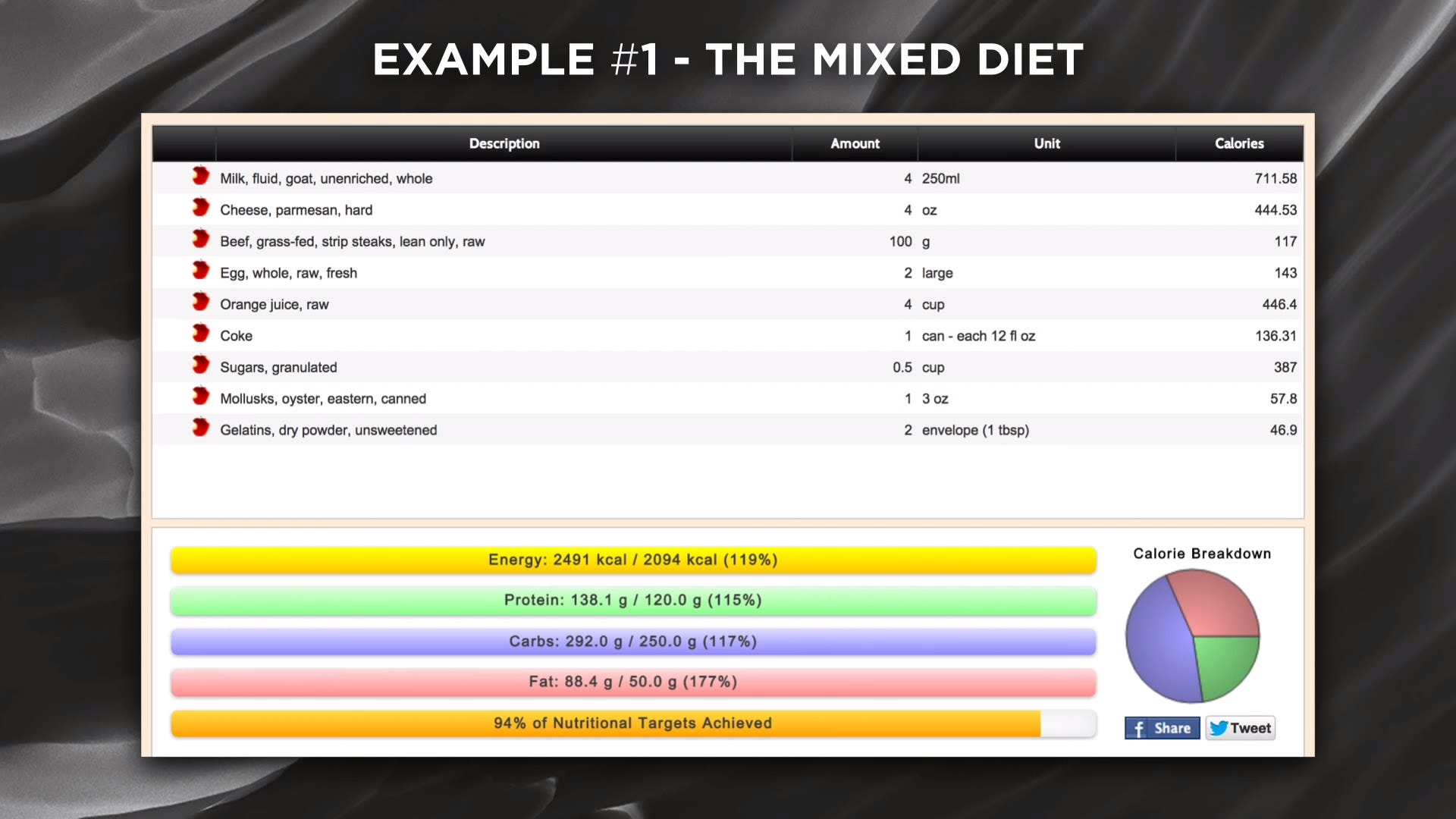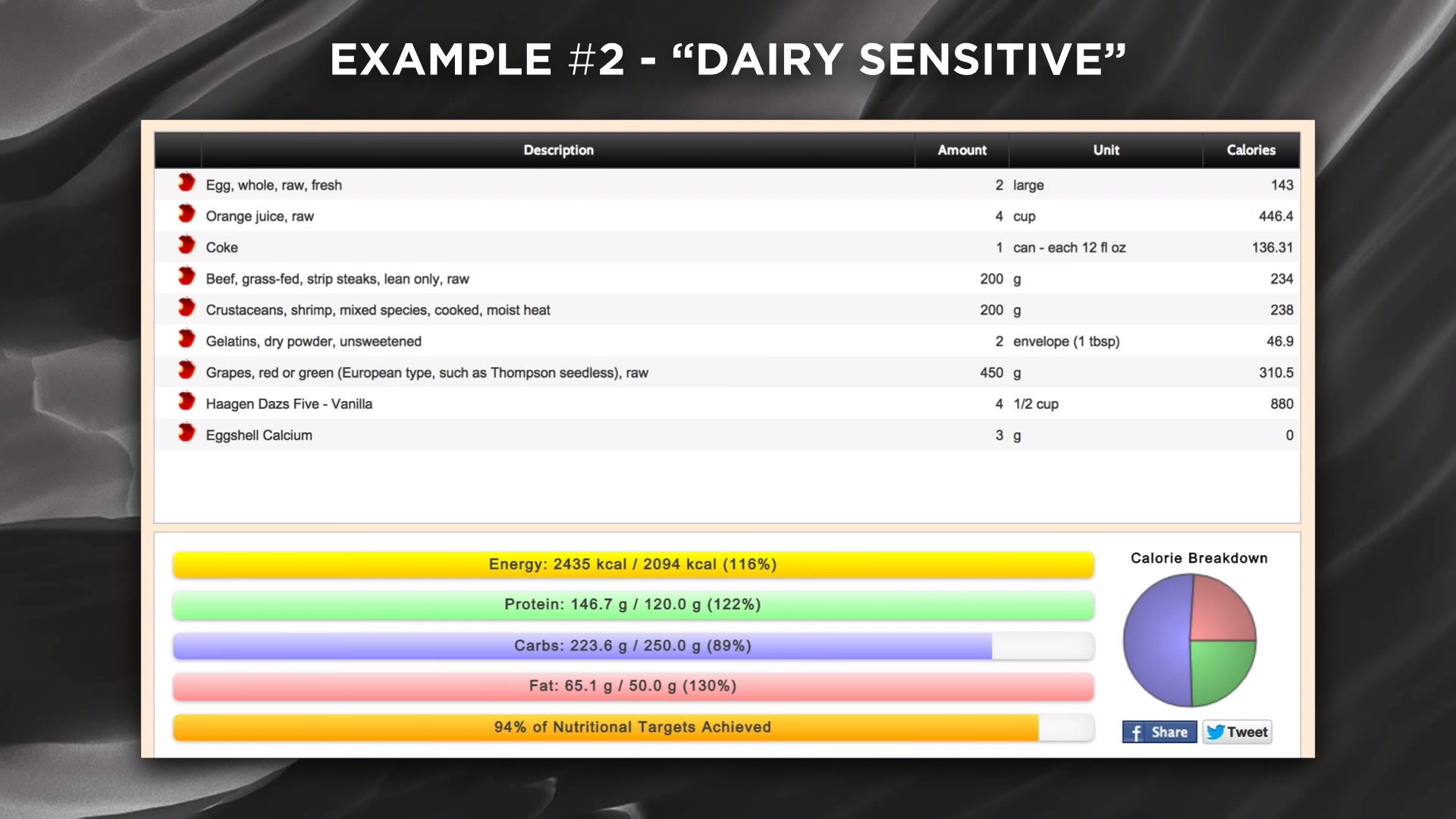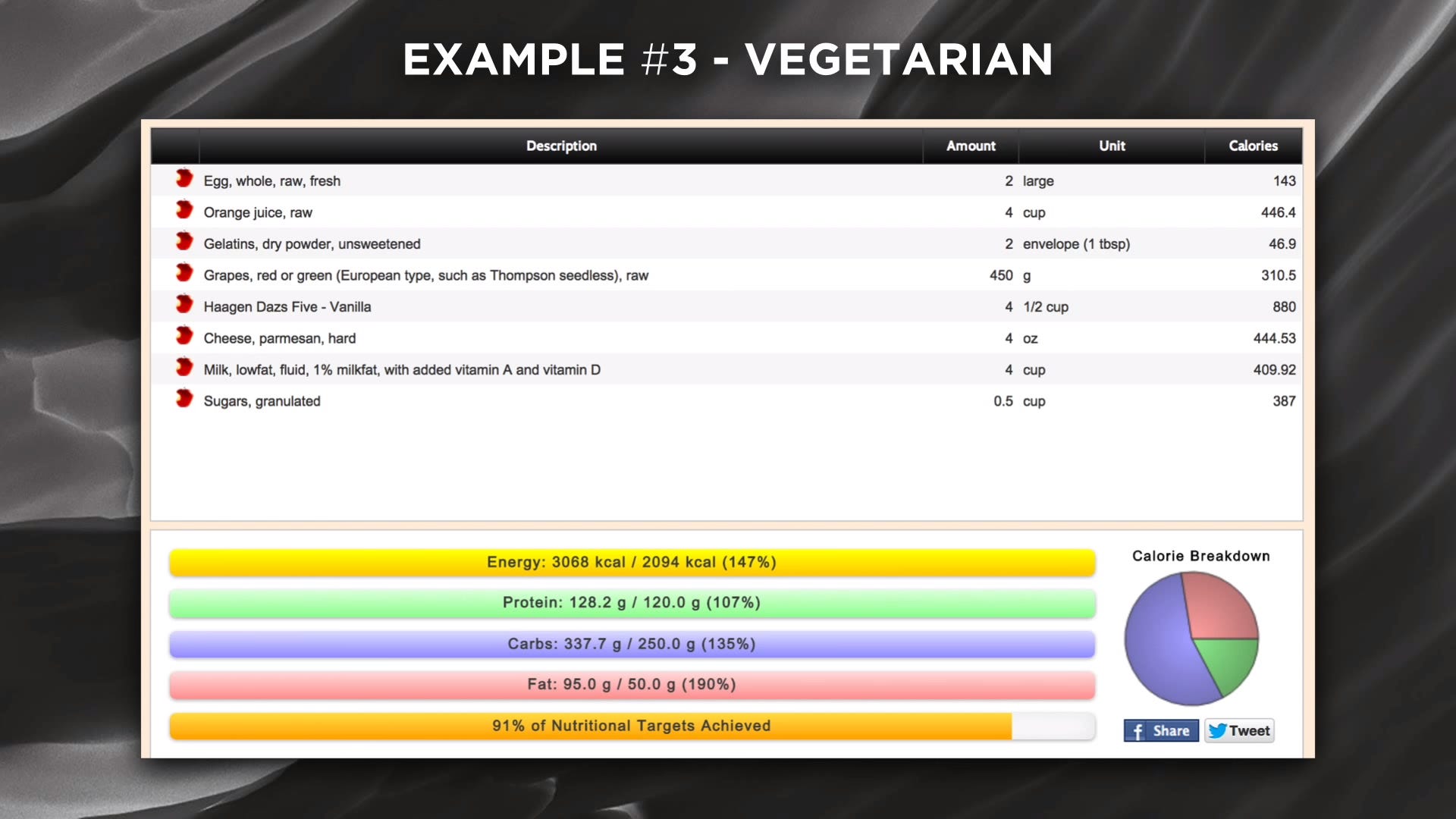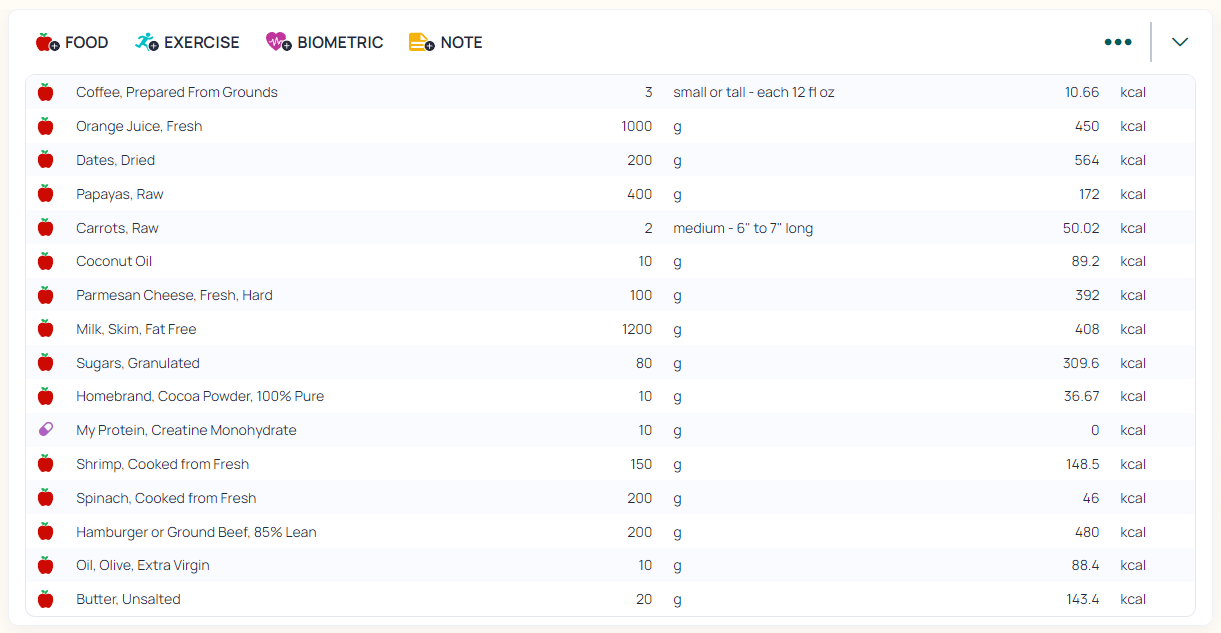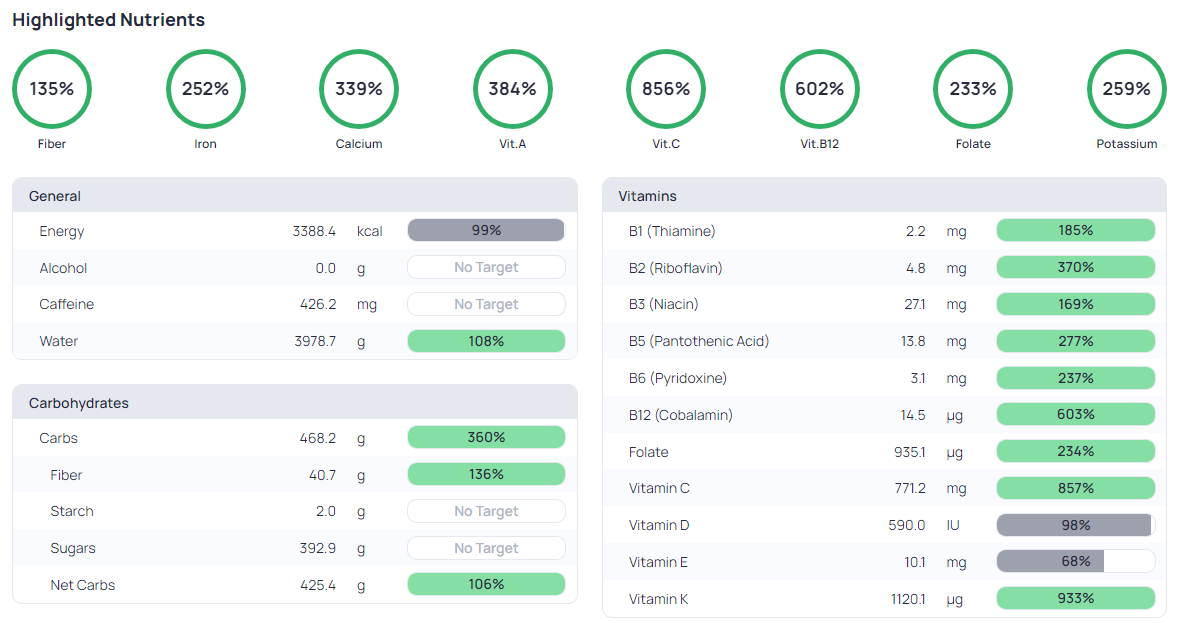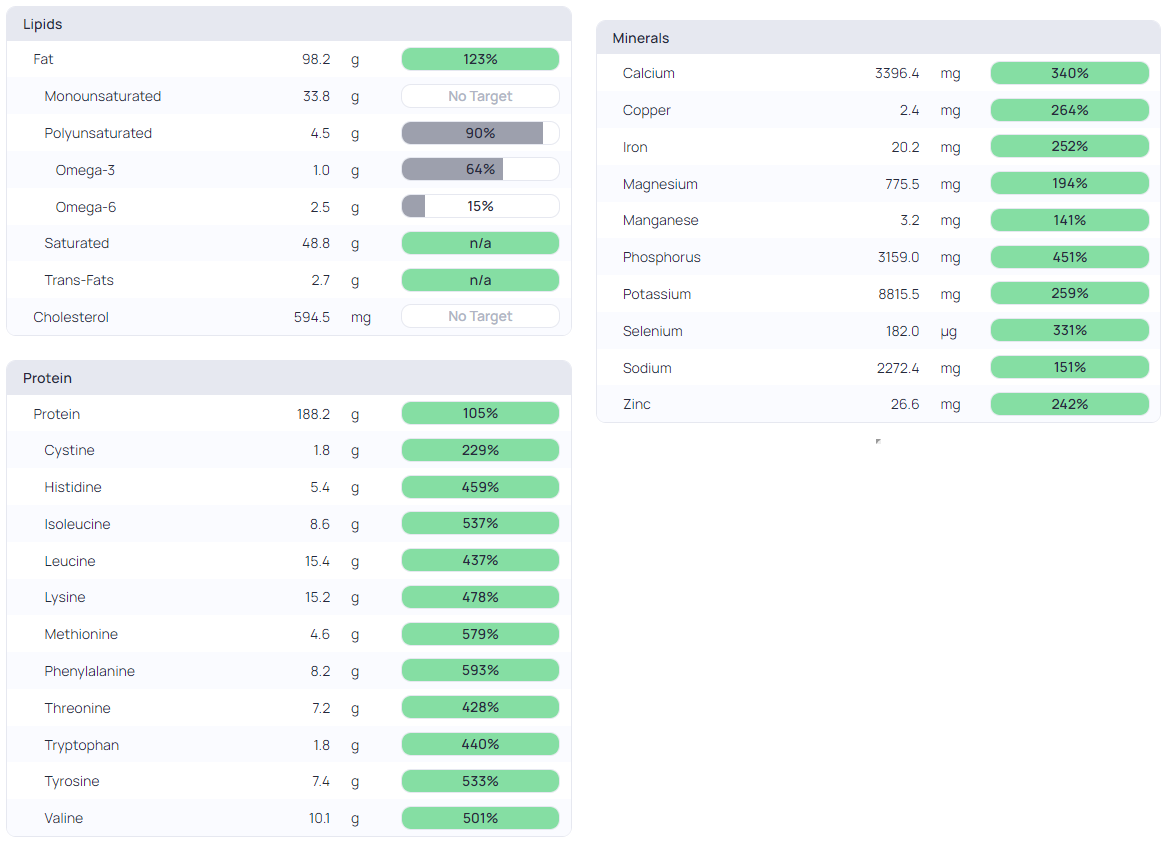D
Deleted member 23558
God make my neurotransmitters great inc
- Joined
- Nov 3, 2022
- Posts
- 64,686
- Reputation
- 92,000
DISCLAIMERS
As the work of Raymond Peat (et al.) has gained traction, more and more people have asked for a simple overview of his main ideas.
This is my humble attempt at presenting just that.
Meet Peat
Core Idea
Basic Peaty Principles
Tracking Progress
Avoiding PUFAs
Embracing SFAs
Prioritizing Sugars Over Starches
Consuming Adequate Proteins
Practical Information
Macronutrient Partition
Food Sources
Supplements
Day-of-Eating Examples
Carrot Salad
Popular Peaters
Resources
- I am not a doctor. Nothing you will find here constitutes medical advice.
- Reductive guides such as this one are fundamentally “un-Peaty” insofar as they are intrinsically authoritarian. I have tried to mitigate that aspect by weaving in further readings, inciting curiosity, and prioritizing nuance. I hope this serves as a “necessary evil” to help newcomers navigate the space. Welcome aboard.
As the work of Raymond Peat (et al.) has gained traction, more and more people have asked for a simple overview of his main ideas.
This is my humble attempt at presenting just that.
Meet Peat

Dr. Raymond Peat (1936-2022), often called simply “Ray Peat”, was a PhD in biology and biochemistry with a specialization in physiology and a pioneer in the field of endocrinology.
He has written several books and published dozens of articles on his website and newsletter, diving deep into topics like health, metabolism, energy, vitality, consciousness, politics and the human condition.
Most importantly, he was a kind, caring and genuine man who helped hundreds of people deal with difficult (often seemingly-helpless) conditions and improve their lives either through his freely published works or directly through his email.
Although Dr. Peat recently passed away on Thanksgiving day, he will be remembered as one of the most iconoclastic thinkers of our time, and as one of the founders of the “pro-metabolic” or “bioenergetic” approach to health and physiology—a title I’m sure he would humbly dismiss.
Core Idea

Everything Peat ever recommended had (at least) one goal in mind: increasing your metabolic rate, AKA your metabolism. In his own words:
“Keeping the metabolic rate up is the main thing, and there are lots of ways to do it.” - Raymond Peat, PhD
Your metabolism is the sum of all processes going on inside your body. All of these processes require energy to take place. The higher your metabolism is, the more energy your body will produce, use and require.
Your metabolism can be measured by the amount of energy (calories) your body uses just to keep itself alive. This is known as the “basal metabolic rate.”
It can also be measured by how much heat your body produces (i.e., what your temperature is), because heat is a byproduct of energy production.
Ray Peat’s guidelines and recommendations always involve helping us keep our metabolism high. This is primarily done either by consuming foods that promote it or by avoiding foods that inhibit it.
Having a high metabolism won’t mean your body will get “used up” more quickly. Unlike machines, living organisms with a healthy supply of energy have an easier time maintaining their structural integrity.
This is because all of their components—cells, organs, muscles, etc.—need energy to function andto maintain their structure.
1
In sum, what Peat and others showed is that energy and structure are interdependent and reinforce each other.
In the words of Nobel laureate Albert Szent-Györgyi:
“A living cell requires energy not only for all of its functions, but also for maintenance of its structure. […] Life supports life, function builds structure, and structure produces function. Once the function ceases, the structure collapses: it maintains itself by working.”
This is why one of Peat’s main goals is helping us achieve the high metabolism characteristic of a healthy child: warm, active, growing, glowing with vitality, devoid of stress, able to repair itself with ease, living intensely, etc.
“A high level of metabolic intensity is characteristic of both young plants and young animals under conditions that are ideal for their life, meeting their energy and substance needs abundantly.” - Raymond Peat, PhD
Embodying such a metabolism wouldn’t just enhance our ability to avoid and deal with illnesses and stress, it would also enable and support a child-like euphoric curiosity towards the world around us.
“Keeping the metabolic rate up is the main thing, and there are lots of ways to do it.” - Raymond Peat, PhD
“A living cell requires energy not only for all of its functions, but also for maintenance of its structure. […] Life supports life, function builds structure, and structure produces function. Once the function ceases, the structure collapses: it maintains itself by working.”
“A high level of metabolic intensity is characteristic of both young plants and young animals under conditions that are ideal for their life, meeting their energy and substance needs abundantly.” - Raymond Peat, PhD
Basic Peaty Principles

Tracking Progress
The best way to measure whether your metabolism is increasing or not is by measuring your underarm temperature and pulse rate upon waking and at midday every day.
“Oral or armpit temperature in the morning, before getting out of bed, should be around 98° F [36.6º C], and it should rise to 98.6° F [37.1º C] by mid-morning. […] Healthy populations have an average resting pulse rate of about 85 per minute.” - Raymond Peat, PhD
This “baseline” practice will allow you to know whether all other practices are working or not.
Simply start by taking the temperature right when you wake up and are still laying in bed, and by taking it again later on at around noon. Try to do that every day to see what your average temperatures are throughout the week. As you implement some of the changes explained below, the goal is to see those numbers rise steadily.
2
It’s also interesting to measure your temperature after eating. If your metabolism is working properly, it should rise, as your body processes and burns through the newfound fuel. If, on the other hand, your metabolism is running on stress hormones, then food could act as an anti-stressor and lower your temperature. Should this be the case, you might have some work to do, and you could begin by…
“Oral or armpit temperature in the morning, before getting out of bed, should be around 98° F [36.6º C], and it should rise to 98.6° F [37.1º C] by mid-morning. […] Healthy populations have an average resting pulse rate of about 85 per minute.” - Raymond Peat, PhD
Avoiding PUFAs
“Chemically, the material that makes these oils very toxic is the polyunsaturated fat itself. These unsaturated oils are found in very high concentrations in many seeds, and in the fats of animals that have eaten a diet containing them. The fresh oils, whether cold pressed or consumed as part of the living plant material, are intrinsically toxic, and it is not any special industrial treatment that makes them toxic.” - Raymond Peat, PhD
There are essentially two types of fats:
- Saturated Fatty Acids (SFAs), and
- Unsaturated Fatty Acids, an umbrella term for two sub-types:
- Monounsaturated Fatty Acids(MUFAs),
- Polyunsaturated Fatty Acids (PUFAs).
All you need to know for now is that PUFAs are molecularly fragile and thus oxidize very easily. As soon as they are exposed to light, air and (especially) heat, they “go bad” and begin breaking down into toxic chemicals. All things oxidize, to some degree; PUFAs oxidize a lot. You can read more about how they oxidize on part [2] here.
The reason this PUFA oxidation is a big deal is because your body is ultimately made up of the things you consume. Whenever you eat PUFAs, they slowly accumulate in your body, and it can take years of cutting them out to replace them.
Because of this (and more), PUFAs are anti-metabolic, and prevent proper thyroid function. You can read more about how that happens on this article.
Main sources of PUFAs include sunflower oil, canola oil, almond oil, grape seed oil, corn oil, margarine, peanut oil, safflower oil, vegetable oil, fish oil, walnut oil, cottonseed oil, soybean oil, sesame oil, flaxseed oil…
I will not get into why PUFA-ridden oils are used everywhere in today’s cooking and food products. You can read more about that here.
Just know that many of these oils were originally used as machine lubricants. Canola oil has also historically been used to paint boats, because its contact with air turns it into a thin layer of plastic that protects the wood from water. Today, it’s used to cook your food.
Unless a restaurant specifically mentions that they are cooking with extra virgin olive oil, coconut oil, ghee or butter, chances are they are using PUFA-ridden vegetable oils.
You can read more about Ray’s views on vegetable oils here.
“Chemically, the material that makes these oils very toxic is the polyunsaturated fat itself. These unsaturated oils are found in very high concentrations in many seeds, and in the fats of animals that have eaten a diet containing them. The fresh oils, whether cold pressed or consumed as part of the living plant material, are intrinsically toxic, and it is not any special industrial treatment that makes them toxic.” - Raymond Peat, PhD
- Monounsaturated Fatty Acids(MUFAs),
- Polyunsaturated Fatty Acids (PUFAs).
Embracing SFAs
“As little as one or two teaspoonfuls of coconut oil per day appears to have a strong protective effect against obesity and cancer.” - Raymond Peat, PhD
Unlike PUFAs, saturated fats seem to be protective, thyroid-promoting and pro-metabolic. They tend to be solid at room temperature, and it’s very hard for them to spoil. Cooking with them is therefore advised.
Best sources include coconut oil, ghee, butter and beef tallow.
3
You could take this a little further and “saturate yourself” by incorporating coconut oil into your diet almost like a supplement.
In the 1940’s, US farmers tried to use coconut oil to fatten their animals; but much to their surprise, the more coconut oil they fed their stock, the leaner, more active and hungrier they got. The reason why is simple: coconut oil has some of the highest content of SFAs, which kicked the animals’ metabolism into gear.
4
As per Kate Deering’s “How to Heal Your Metabolism” recommendations, start with 1 teaspoon per day, with an additional teaspoon every week until you get to 1 or 2 daily tablespoons. If you have to run to the bathroom, chances are you took too much coconut oil at once—cut back and try again.
Note that some people do not digest virgin coconut oil well, and for that reason the refined version, which has less allergens, is often recommended, and is perfectly safe.
You can read more about Ray’s views on coconut oil here.
“As little as one or two teaspoonfuls of coconut oil per day appears to have a strong protective effect against obesity and cancer.” - Raymond Peat, PhD
Prioritizing Sugars Over Starches
There are essentially two types of carbohydrates:
- Simple carbohydrates, including
- Monosaccharides (e.g., glucose, fructose, ribose, galactose), and
- Disaccharides (e.g., sucrose, lactose and maltose).
- Complex carbohydrates, including mostly
- Polysaccharides (e.g., starch).
Perhaps the most controversial aspect of Ray Peat-inspired nutrition is that it doesn't shy away from carbohydrates, and that it prioritizes sugary foods (e.g., fruits, honey and even white sugar) over starchy ones (e.g., bread, pasta and rice). In a world obsessed with low-sugar diets and filled with low-carb, ketogenic, and even carnivore advice, this particular aspect catches many people's eyes.
5
Ultimately, all of the carbs mentioned above get turned into glucose by your body. Glucose is what (best) fuels your metabolism. Your thyroid, your muscles, your liver, and in particular your brain, require a good stream of glucose to function properly.
6
The best sources of carbohydrates are simplesugars, like the ones found in fruit, honey, organic root vegetables, pulp-free fruit juice, and white table sugar. On the flipside, the complex carbohydrates found in starchy foods like bread, pasta and rice are to be consumed in moderation, or not at all.
This is partly because many simple, “natural” sugars (i.e., not pure glucose nor high-fructose corn syrup) raise blood sugar levels less than many complex carbs, as can be attested by their glycemic index.
7
Their high fructose content—as opposed to the pure glucose found in starch—means they are partly processed by the liver, and don't just cascade into your bloodstream. This means they can serve as a stabler, more sustainable, and more effective source of energy.
It is also partly because of gut health. We all intuitively know gut health plays a major role in our wellbeing, because few things can ruin our mood and focus more than queasy bowels. Gut health is an extremely complicated topic, but Peat’s guidelines revolve around helping us reduce inflammation and improve nutrient absorption by healing the permeability of our gut lining (i.e., the layer that coats our guts and acts as a mediator between what we eat and what enters our bloodstream).
In order to do this, limiting grains/gluten is often recommended, because many people’s guts are simply not healthy enough to process them with ease. Unlike simple sugars, grains contain so-called “anti-nutrients” like gluten which can be hard to digest, and can therefore overfeed intestinal bacteria, causing bacterial overgrowth (e.g., SIBO).
8
Obviously, starchy processed packaged foods like cookies, brownies, etc. should also be avoided, especially considering they usually contain PUFAs.
So, at a very high level, Ray’s carbohydrate recommendations tend to revolve around prioritizing simple sugars, particularly fruits and honey, as these tend to provide plenty of nutrients/minerals along with fructose (which will steadily fuel our metabolism) and can be easily digested (thus protecting us against developing a “leaky gut” and/or bacterial overgrowth).
You can read more about Ray’s views on sugar and starches here and here.
- Monosaccharides (e.g., glucose, fructose, ribose, galactose), and
- Disaccharides (e.g., sucrose, lactose and maltose).
- Polysaccharides (e.g., starch).
Consuming Adequate Proteins
“The degenerative and inflammatory diseases can often be corrected by the use of gelatin-rich foods.” - Raymond Peat, PhD
Protein is generally categorized into two types:
- Animal proteins: found in eggs, meat, collagen, dairy and fish; and
- Vegetable proteins: found in legumes, beans, grains, veggies, etc.
However, all of these proteins are made up of “mini-proteins” called amino acids, and their presence varies widely depending on the source. In this sense, there are actually around 20 different types of proteins.
Some of these amino acids are called “essential” because they are not synthesized by our bodies, so we need to get them from external sources; others are called “non-essential” for the opposite reason, even though their consumption might very well be beneficial (and, in fact, often is).
Proteins play major roles in our bodies: they make up our structure (hair, skin, muscle, organs, etc.), allow for muscle contractions, for the synthesis of hormones like insulin, for the production of enzymes and antibodies, and, in times of need, can even become a source of energy. As such, we need to be aware of our protein consumption, making sure the type of protein we eat (i.e., the specific amino acids) is optimal, and that the amount of protein overall supports our health and growth.
Back in the day, we used to eat animals “nose-to-tail”; that is, we used to consume different sources of protein within one same animal: muscle meats, organs and gelatin (skin and ligaments), and cook bone broths with the remnants. Nowadays, we mostly rely on muscle meats for animal protein intake.
This is problematic, because it means we are getting an excess of the amino acids present in muscle meats, and a deficiency of those present in the rest of the animal. For instance, muscle meat is very high in tryptophan, an inflammatory amino acid, but the effects of excessive tryptophan can be mitigated by eating more gelatin (devoid of tryptophan), because amino acids compete for absorption in our bodies.
“Gelatin (the cooked form of collagen) makes up about 50% of the protein in an animal, but a much smaller percentage in the more active tissues, such as brain, muscle, and liver. 35% of the amino acids in gelatin are glycine. […] Some of these amino acids, such as glycine, have a very broad range of cell-protective actions.” - Raymond Peat, PhD
It could be helpful to aim for 1/3 of our daily protein intake to come from gelatin, and to have the rest be filled with sources like dairy (i.e., milk and cheese), pasture-raised eggs, non-fatty seafoods (e.g., mussels, shrimp and white fish), gelatinous muscle-proteins (e.g., oxtail and shank) or even well-cooked potatoes.
Additionally, “supplementing” with beef liver and/or oysters once a week or so is recommended, as Nature went all-in and packed them with nutrients and minerals.
You can read more about Ray’s views on gelatin and protein here, about tryptophan here and about milk here.
“The degenerative and inflammatory diseases can often be corrected by the use of gelatin-rich foods.” - Raymond Peat, PhD
“Gelatin (the cooked form of collagen) makes up about 50% of the protein in an animal, but a much smaller percentage in the more active tissues, such as brain, muscle, and liver. 35% of the amino acids in gelatin are glycine. […] Some of these amino acids, such as glycine, have a very broad range of cell-protective actions.” - Raymond Peat, PhD
Practical Information

Macronutrient Partition
One could start by experimenting with the following macronutrient breakdown:
Protein
- Moderate amount.
- Around 100 g a day.
9
- Roughly 10-35% of daily calories.
Carbohydrates
- Moderate to high amount.
- Around x2-4 times the amount of protein, or 200 to 400+ g a day.
- Roughly 45–65% of daily calories.
Fats
- Moderate to low amount.
- The remaining number of calories, usually below 100 g a day.
- Roughly 10-20% of daily calories.
Please note that these suggestions are meant to give rough estimates:
“The proportion of proteins, carbohydrates, and fat—it probably should be something like a third of each, but I’m not sure what the ideal is. It depends so much on the quality of each of them. Avoid starch, and avoiding eating polyunsaturated fats, and avoiding the very high tryptophan-content proteins... then you could go very high on any one of the major nutrients without problem.” - Raymond Peat, PhD
10
Finally, note as well that adequate protein, carbs and fat consumption works best when they are all consumed at the same time; that is, we are more likely to absorb and process nutrients properly when we eat meals that contain a portion of each.
9
“The proportion of proteins, carbohydrates, and fat—it probably should be something like a third of each, but I’m not sure what the ideal is. It depends so much on the quality of each of them. Avoid starch, and avoiding eating polyunsaturated fats, and avoiding the very high tryptophan-content proteins... then you could go very high on any one of the major nutrients without problem.” - Raymond Peat, PhD
10
10
Food Sources
Although I find them aesthetically unbearable, these two popular images do a great job at summarizing the main sources of “Peaty” foods.
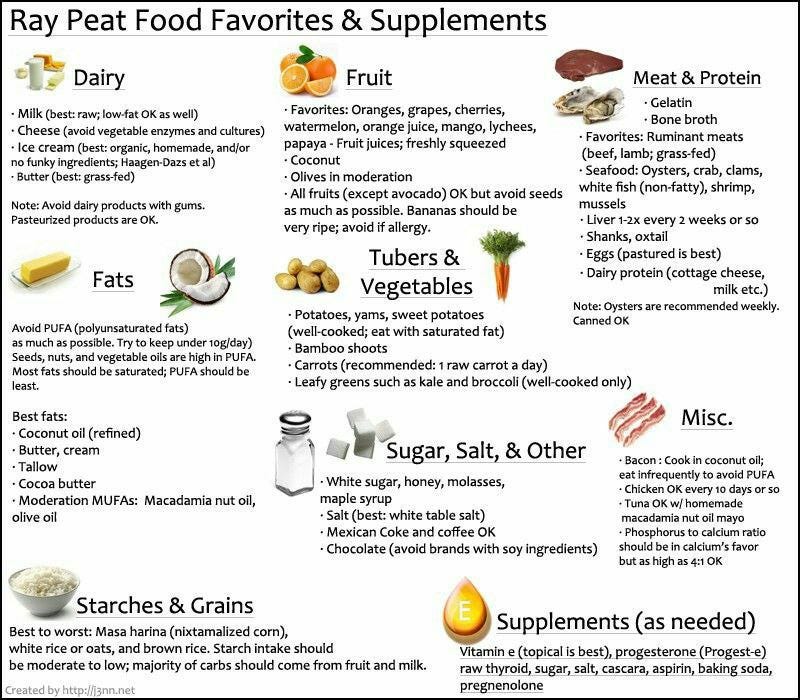
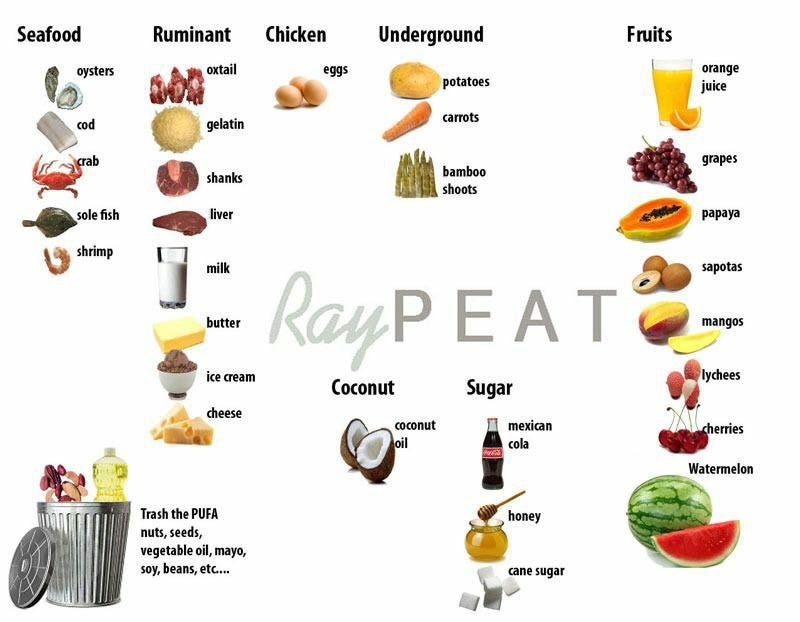
Supplements
Much could be said about supplementation, but I will keep it somewhat short for now.
Most supplements you can buy probably do more harm than good. The majority of commercial supplements are spiked with harmful fillers, binding agents, preservatives and other toxic compounds often overlooked in the “other ingredients” section (and sometimes illegally omitted in the labeling altogether). Just the other day, cleaning up forgotten supplements in my house, I found one laced with baby powder. Yummy.
Even if you did find a reliable supplier that did not provide toxic additives, it can be confusing to learn whether the type of compound itself is bioavailable or not, if it has been properly sourced and treated, in what manner or context it should be taken, etc.
That being said, there are some supplements which can at times be recognized as “Peaty” when they are properly sourced, such as:
- Vitamin A
- Vitamin D
- Vitamin E (extracted from wheat germ; more on that here)
- Vitamin K (particularly in MK-1, MK-4 and/or MK-7 form)
Besides the “ADEK” vitamins, one could also look into other supplements if they believed they could be helpful:
- Progesterone (e.g., Progest-E; more on that here, here, here, here and here)
- Pregnenolone (more on that here)
- Salicylic Acid (i.e., Aspirin; more on that here)
- Baking Soda (for CO2; more on that hereand here)
- Calcium (e.g., from eggshells; more on calcium here)
- Magnesium (e.g., in chloride or bisglycinate form)
- Thyroid (T3 and T4; more on that here)
- Salt (more on that here)
- Etc.
To learn about and source all of these supplements (and other ones), the website toxinless.com is invaluable, as its goal is to find the purest, most reliable and bioavailable supplement sources online (though, sadly, it is particularly focused on US-based suppliers). It is also a great place to learn about how to take them, which in itself is half of the battle.
For high-quality supplements, Idea Labs—ran by Ray Peat Forum-virtuoso Georgi (Haidut)—is also a good option, though your wallet will probably disagree with that.
Finally, many among us consider the following foods almost as supplements, and they should probably be prioritized over actual commercial supplements:
- Ray Peat’s carrot salad (more on that later)
- Coconut oil (as previously mentioned; virgin or refined)
- Beef liver (especially grass-fed)
- Oysters (fresh or canned)
- Unlimited coffee (if paired with sugary carbs)
11
11


